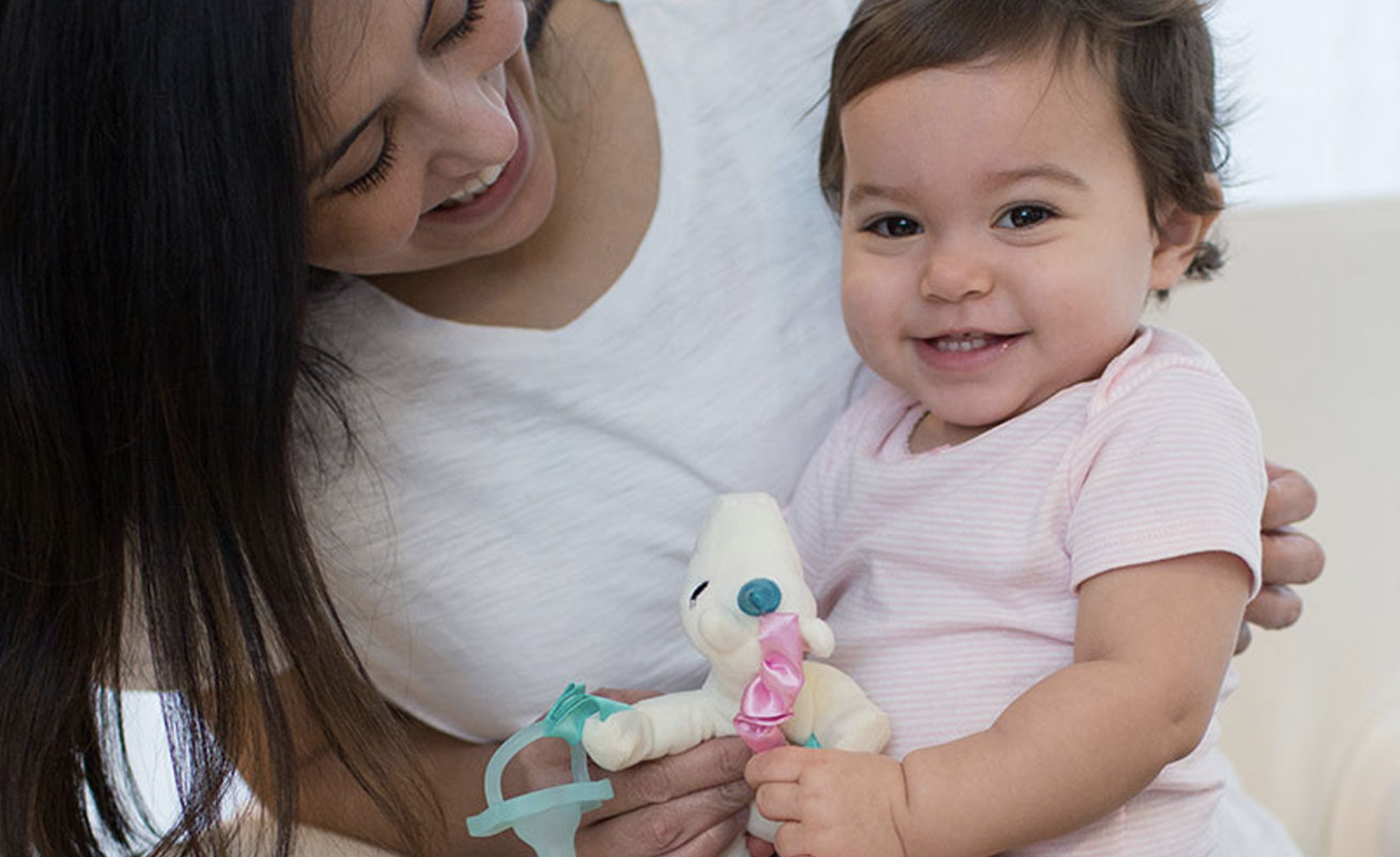The HUG Your Baby's Roadmap to Breastfeeding Success mentions “using a ‘lovie’” at twelve months to help babies through the developmental challenges of those time periods.
Use of a “lovie” may have cultural roots in countries like the USA, however this practice is grounded in well-established child development theories. "Lovies" can be one possible “tool” for mothers wanting to extend breastfeeding duration.
Child development literature concludes that babies must have attentive, responsive care so that the rapidly growing brain develops to its full potential, laying the foundation for lifelong, healthy emotional attachment and psychological growth. Learning to read a baby’s feeding cues, to notice early signs of over-stimulation, to respond to infant crying, and to appreciate a baby’s active and deep sleep cycles are all important tasks of sensitive parents who seek optimal parent-child attachment and want the best for their child.As a securely attached baby approaches her first birthday, a parent will begin to see proof of her baby’s important mental development. A mother might notice her baby glance over to her when a neighbor picks up the baby—a behavior that displays an important cognitive achievement called “social referencing.” As months go by, “stranger anxiety” replaces the more “polite” social referencing. This baby now clearly knows that “those people are my parents” but “you are not!”
By nine months the baby initiates games that reflect a new surge in her mental capacities. She squeals with delight when she drops a spoon and sees Mom retrieve it. She laughs uncontrollably when her brother plays “hide and seek,” or she giggles triumphantly when her father plays “peek-a-boo.” These games demonstrate the baby’s cognitive growth toward “object permanence”: the concept that “things that go away can come back.” This developing object permanence also contributes to increased stranger and separation anxiety.
The Science Behind a "Lovie"
This is when the “lovie” can be useful.
Parents can incorporate a small blanket or stuffed animal (i.e., a “lovie,” or "transitional object" in the professional jargon) into their cuddles with the baby throughout the day. Within a few days the baby will associate the closeness she feels with her parents with this sweet “lovie.” Then, when the baby needs her parents at night, the mother or father can comfort the child without feeding him by cuddling him up with his “lovie.” After a week or so of more frequent night time awakenings, most children become accustomed to the world of “object permanence” and resume their regular sleep patterns.
The next important Touchpoint, or developmental step, occurs when a baby begins learning to walk (at around one year of age). Babies this age again show disruption in their eating, sleeping or general behavior as they strive to become upright! The “lovie” can be used again to help comfort this child back to sleep without adding nighttime feeds. Of course, increased nighttime breastfeeding (as a comforting technique) may be the best option for some, but not all, mothers.
Parents who have chosen to add more nighttime feeds or breastfeeding might wonder how to get back to a regular, daytime eating pattern. Every few days a formula-feeding mother can cut in half the amount of formula in each bottle and incorporate the “lovie” into the nighttime feeding routine. A breastfeeding mother can cut in half the duration of each nighttime feed, as well as use the “lovie.” Usually, within a week or so, the baby will no longer require extra calories at night. And after the developmental surges of separation anxiety and learning to walk have passed, the baby can continue to use the “lovie” to help him return to a good night’s sleep.
© HUG Your Baby 2020

